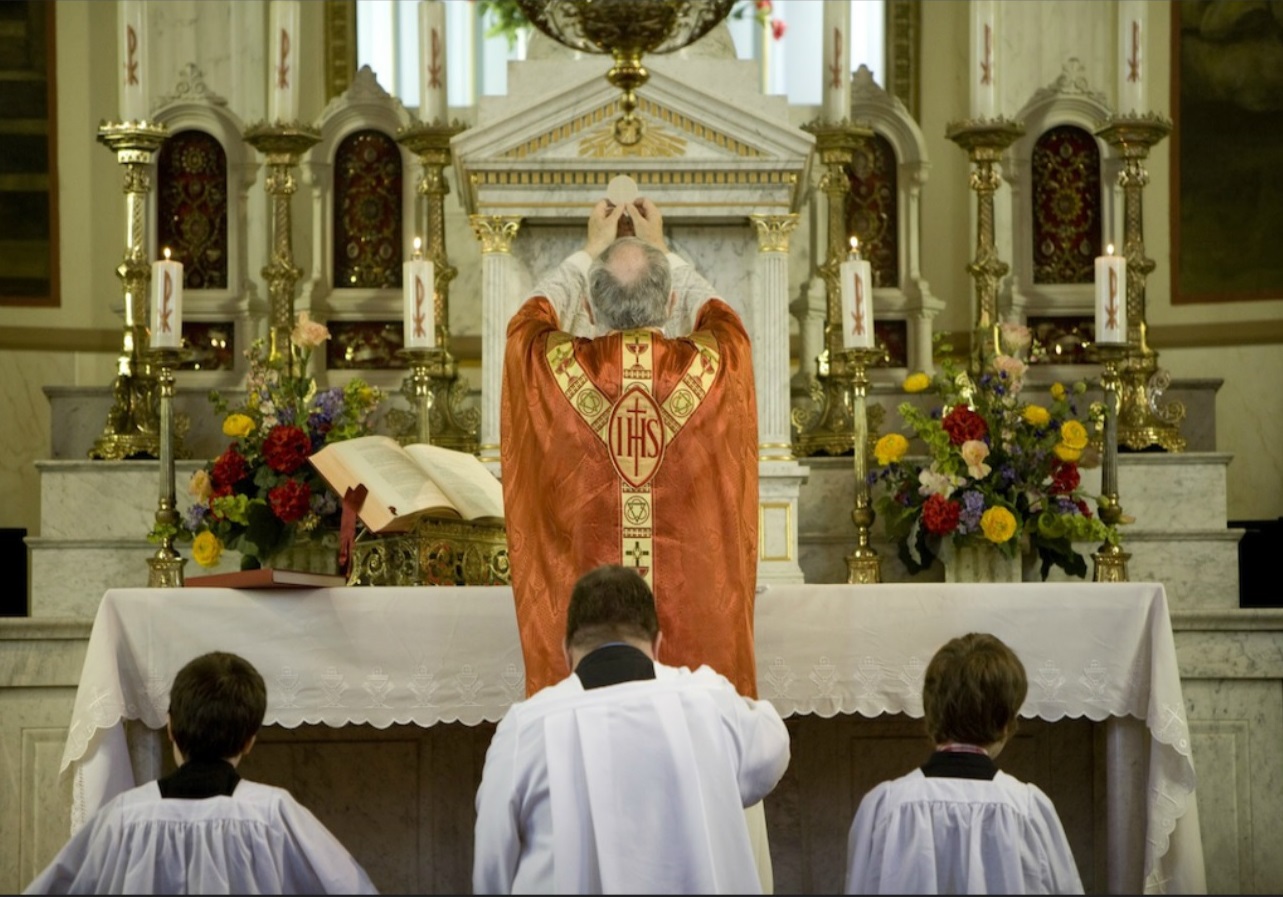 CELEBRATING THE ‘NEW’ MASS – IN LATIN
CELEBRATING THE ‘NEW’ MASS – IN LATIN
Fr. Brian Harrison, O.S.
When Catholics today hear about Masses celebrated in Latin, they usually assume this refers to what is now called the 'extraordinary form’ of the Roman Rite: the ancient liturgy, completely in Latin, which was used with little variation for many centuries prior to the reforms of Vatican Council II.
Relatively few Catholics, however, are aware that the ‘ordinary form’ of the Roman-Rite Mass – that is, the revised, post-conciliar liturgy now celebrated in the vernacular – can also be celebrated mainly in Latin and with other more traditional options. This is a part of a healthy liturgical pluralism that has deep roots in the traditions of our worldwide Church. As well as incorporating seventeen different Eastern rites, each with its own forms of worship, Catholicism has traditionally included quite a few varieties of the Latin liturgy.
But can the new Mass be offered using Latin? Indeed it can. This option has been offered each Sunday for five years at beautiful and historic St. Mary of Victories Chapel (built 1843), just south of the Arch. On hearing this, some Catholics assume it must be a “hybrid” liturgy: an incongruous mixing-up of the ordinary and extraordinary forms. Not so. On the contrary, the new rite (a.k.a. the Novus Ordo) celebrated mainly in Latin could be described as the most “thoroughbred” form of the post-Vatican-II Mass! The Missal used is the latest Latin “editio typica”, the original and most authoritative text for the modern liturgy. Published at the Vatican, it’s not only used quite often by the post-conciliar popes but is also the basis for the world’s different vernacular translations.
Many Catholics are surprised to learn that the new General Instruction of the Roman Missal allows for certain traditional options that are now seldom seen in the U.S. But the ordinary form Mass, as celebrated with these options at St. Mary of Victories, is actually very close to the style of worship contemplated by the Fathers of Vatican II when they promulgated the Constitution on the Liturgy, Sacrosanctum Concilium (SC) in 1963. They decreed, for instance, that Latin was to continue as our main liturgical language (SC #36), and did not call for priests to change their location on the sanctuary. (The celebrant traditionally stood in front of the altar during the Eucharistic Prayer, facing the same way as the people.) It was not the Fathers of Vatican II, but Pope Paul VI some years after the Council, who decided to legitimize the reception of Communion standing and in the hand as well as kneeling and on the tongue (the traditional manner that Benedict XVI, as pope, asked from those receiving Holy Communion personally from him). Nor did SC ask for new Eucharistic Prayers in addition to the First – i.e., the ancient ‘Roman Canon’, the centerpiece of the Roman-Rite Mass. It did, however, insist strongly that the Church’s great treasury of sacred music, especially Gregorian chant, should be not only retained but given “pride of place” (SC #116).
Approval was given by our Archdiocese early in 2008 for St. Mary of Victories to use these traditional practices at one of its Sunday Masses. This is very much in line with Benedict XVI’s well-known call for a “hermeneutic of continuity” with respect to Vatican II. This meant that he, like all the other post-Vatican II popes, insisted that the Council’s teachings and directives are to be understood, explained and implemented in a way that shows forth their harmony and unity with the Church’s great bimillennial heritage of doctrine and worship. Along with all other ‘ordinary form’ Eucharistic celebrations, ours includes the three main reforms deriving from Vatican II. First, there is the much greater selection of Scripture readings now provided in the multi-volume Lectionary. Another is the encouragement of more active participation by the people. So, as in other parishes, lay readers at St. Mary’s proclaim the Scriptures, and, led by our choir under the expert direction of chant scholar Stan Metheny, worshippers learn to sing and recite the essential Latin chants, hymns and responses, as SC urges (#54). The third main conciliar reform has been a greater use of the vernacular while also retaining Latin. Accordingly, we use English for the Scripture readings and Responsorial Psalm (chanted), the Prayers of the Faithful, and one or two congregational hymns, while English translations are provided for everything recited or chanted in Latin.
February 10, 2016, marked the completion of our first nine years of continuously celebrating the Eucharist at St. Mary of Victories in the form described above. This will mark a total of 417 Masses in succession We feel this represents a valuable witness – unique at present in the St. Louis Archdiocese – to the essential continuity of the Roman liturgy that stretches back 1,500 years while incorporating the post-conciliar reforms now constituting the ‘ordinary form’ of this venerable rite. We invite you to join us on any Sunday morning to see another instance of how Holy Mother Church can bring forth from her storeroom treasures both new and old (Mt. 13: 52).
Click here to read Fr. Harrison's homily given on February 10, 2008.


